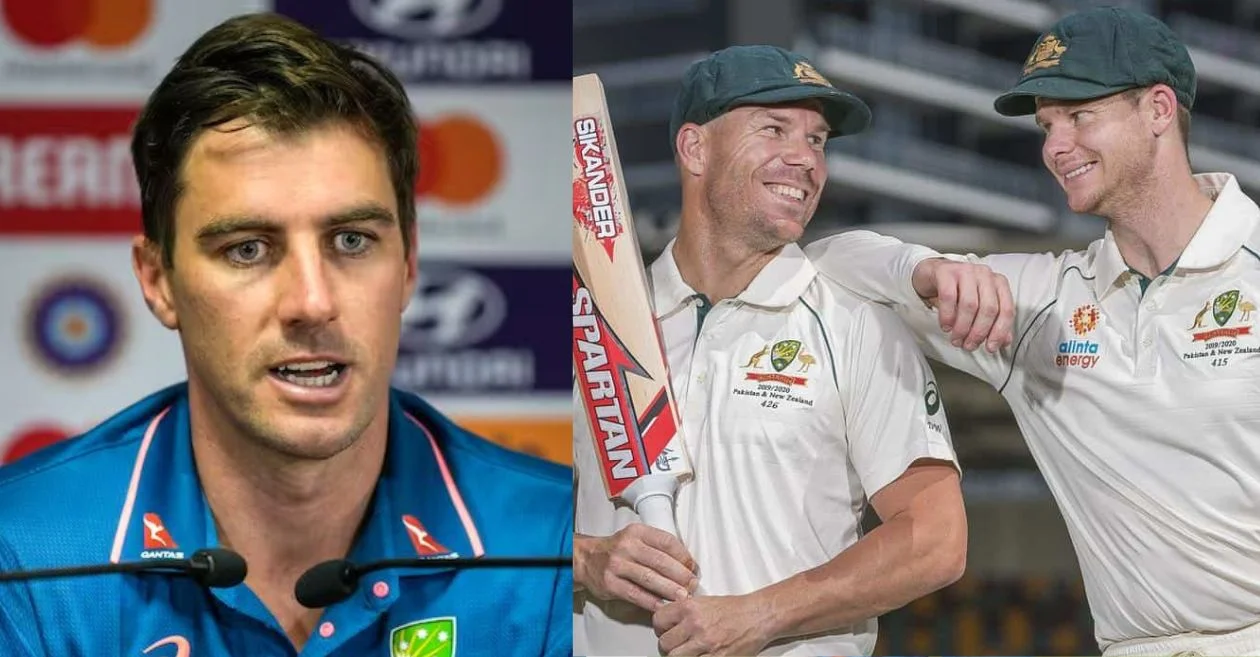Table of Contents
As the cricketing world grapples with the retirement of David Warner from Test cricket, Australian captain Pat Cummins has provided insights into the ongoing debate regarding Warner’s successor as the opening batter.
Notably, the recently concluded third Test against Pakistan marked the end of Warner’s red-ball career, leaving the Aussies in search of a reliable partner for Usman Khawaja at the top of the order. Australia won the third Test and ended the series with 3-0 scoreline.
Steve Smith throws his hat in the ring
Former captain and one of the modern-day greats, Steve Smith, has expressed eagerness to embrace a new challenge by moving up the batting order. In a candid conversation with ABC Grandstand, Smith stated, “I’m actually happy to go up the top. I’m pretty keen if that’s what they want to do. I’m sure the selectors and Ron [Andrew McDonald] and Patty [Cummins] will have a chat after this game, but yeah, I’m certainly interested for sure.”
Pat Cummins responds to Smith’s proposition
Cummins, the current captain of Australian team, has responded to Smith’s proposition, expressing hesitance in displacing the prolific batter from his established position in the middle order. Cummins highlighted Smith’s consistent output at No. 4 and commended the performances of Marnus Labuschagne, Smith, Travis Head, and Mitchell Marsh in their respective batting positions.
“I’m pretty happy with [Smith’s] output at No. 4. Obviously Marnus [Labuschagne], Smudge [Smith], Trav [Head] and [Mitchell] Marsh have been pretty impressive at Nos. 3, 4, 5 and 6. So first instinct isn’t probably to disrupt that,” said Smith as quoted by Cricbuzz.
Also READ: Top 5 best knocks of the recently-retired Australian star David Warner in Test cricket
Team dynamics at the forefront
Cummins emphasized the importance of maintaining the current batting order’s balance, acknowledging the challenge of replicating the impact David Warner had as an opener. He stressed the need to apply pressure on the opposition and keep the scoreboard ticking over, citing these as crucial aspects in Test cricket. Further Cummins also underlined the significance of Shield cricket performances as an indicator of a player’s readiness for the international stage.
“It’s obviously going to be really hard to replicate Davey and what he’s brought to it. I think you look for who is best placed to score runs, really. But I think, in Test cricket, there are some things that remain true – and that is you’ve got to be putting the pressure on the opposition. You’ve got to be ticking over the scoreboard. Not always – but most of the time – you’ve got to keep the scoreboard moving along. There are considerations, but realistically, if anyone is scoring runs in Shield cricket, it’s probably a good sign they can do it at the next level,” Cummins added.
